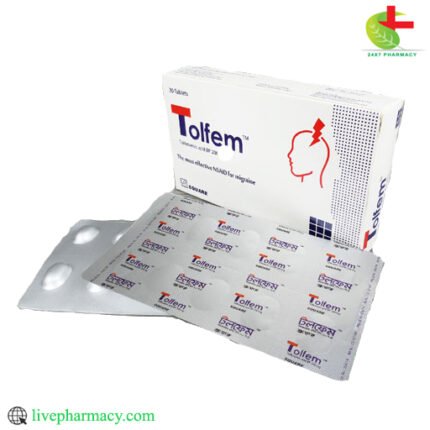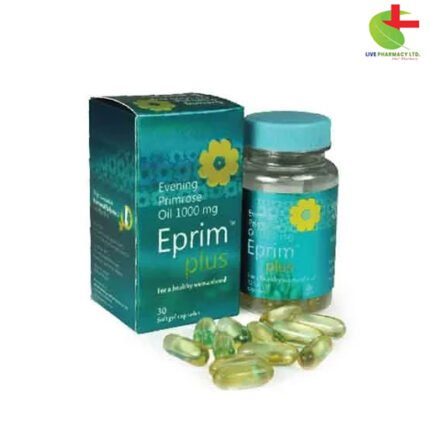Nexum 40
100.30৳ Strip
- Nexum, a proton pump inhibitor, effectively relieves chronic heartburn and associated symptoms of GERD.
- It aids in the healing of erosive esophagitis and maintains its healing, providing long-term relief.
- When combined with antibiotics, Nexum helps eradicate Helicobacter pylori infection, reducing the risk of duodenal ulcer recurrence.
- It also manages symptoms of Zollinger-Ellison Syndrome and acid-related dyspepsia effectively.
- With flexible dosing options and precise administration guidelines, Nexum ensures comprehensive relief for gastrointestinal conditions.
 Brand
Brand
|
Square Pharmaceuticals PLC |
|---|---|
 Generics
Generics
|
Esomeprazole |
Indications
Nexum, a widely trusted medication, serves a multitude of purposes, making it a versatile solution for various gastrointestinal conditions. Its primary indications include:
- Relief from Chronic Heartburn Symptoms and GERD: Nexum effectively alleviates the discomfort associated with chronic heartburn and other symptoms of gastroesophageal reflux disease (GERD), providing much-needed relief to individuals experiencing these issues.
- Healing of Erosive Esophagitis: Erosive esophagitis, a condition characterized by inflammation and erosion of the esophagus lining due to stomach acid reflux, can be effectively treated and healed with Nexum.
- Maintenance of Healing of Erosive Esophagitis: Nexum not only facilitates the initial healing of erosive esophagitis but also helps in maintaining this healing over time, ensuring long-term relief and comfort for patients.
- Eradication of Helicobacter pylori Infection: In combination with other antibiotics such as amoxicillin and clarithromycin, Nexum is instrumental in eradicating Helicobacter pylori infection, particularly in patients with duodenal ulcer disease, thereby preventing recurrence and promoting gastrointestinal health.
- Treatment of Zollinger-Ellison Syndrome: Nexum effectively manages the symptoms associated with Zollinger-Ellison Syndrome, a rare condition characterized by excessive production of stomach acid, providing relief and improving the quality of life for affected individuals.
- Management of Acid-related Dyspepsia: Nexum offers relief from acid-related dyspepsia, commonly known as indigestion, by regulating stomach acid levels and alleviating associated discomfort.
- Healing of Duodenal and Gastric Ulcers: Nexum aids in the healing process of both duodenal and gastric ulcers, promoting tissue repair and reducing the risk of complications associated with these ulcerative conditions.
Pharmacology
Esomeprazole, the active ingredient in Nexum, belongs to a class of medications known as proton pump inhibitors (PPIs). It exerts its therapeutic effects by specifically inhibiting the H+/K+-ATPase enzyme in the gastric parietal cells, thereby suppressing the secretion of gastric acid. Unlike racemic proton pump inhibitors, esomeprazole is the first single optical isomer of a PPI, providing superior acid control and therapeutic efficacy.
Absorption: Nexum capsules contain enteric-coated pellets of esomeprazole magnesium, ensuring optimal absorption and bioavailability. After oral administration, peak plasma levels (Cmax) are typically reached within approximately 1.5 hours (Tmax), with a significant increase in systemic bioavailability observed upon repeated once-daily dosing.
Distribution: Esomeprazole exhibits high plasma protein binding (approximately 97%), with a constant binding affinity over a wide concentration range. The apparent volume of distribution at steady state is approximately 16 liters, indicating extensive tissue distribution.
Metabolism: Esomeprazole undergoes extensive hepatic metabolism primarily via the cytochrome P450 (CYP) enzyme system, specifically CYP2C19 and CYP3A4 isoenzymes. The metabolites formed lack significant anti-secretory activity, with the majority of metabolism attributed to CYP2C19-mediated hydroxylation and desmethylation.
Excretion: The plasma elimination half-life of esomeprazole ranges from 1 to 1.5 hours, with less than 1% of the parent drug excreted unchanged in the urine. Approximately 80% of an oral dose undergoes excretion as inactive metabolites in the urine, while the remainder is excreted in the feces.
Combination Therapy with Antimicrobials: Nexum is commonly prescribed in combination with antibiotics such as clarithromycin and amoxicillin for the eradication of Helicobacter pylori infection. This combination therapy enhances the therapeutic efficacy of Nexum and promotes successful eradication of the bacterial infection.
Dosage
Nexum is available in various oral dosage forms and strengths, each tailored to meet the specific needs of patients suffering from different gastrointestinal conditions. The recommended dosages include:
- Healing of Erosive Esophagitis: Patients are typically advised to take either 20 mg or 40 mg of Nexum once daily for a period of 4 to 8 weeks. Most patients experience significant healing within this timeframe, with additional treatment duration considered if necessary.
- Maintenance of Healing of Erosive Esophagitis: Following the initial healing phase, a maintenance dosage of 20 mg of Nexum once daily is recommended to sustain the healing effects and prevent recurrence of erosive esophagitis.
- Symptomatic GERD: Patients experiencing symptomatic GERD are typically prescribed 20 mg of Nexum once daily for a duration of 4 weeks. In cases where symptoms persist, an additional 4 weeks of treatment may be considered to achieve optimal symptom relief.
- Eradication of Helicobacter pylori Infection: For the eradication of Helicobacter pylori infection, Nexum is administered at a dosage of 40 mg once daily for a duration of 10 days, in combination with antibiotics such as amoxicillin and clarithromycin.
- Zollinger-Ellison Syndrome: The recommended dosage for the management of Zollinger-Ellison Syndrome ranges from 20 mg to 80 mg of Nexum once daily, with individual dosage adjustments based on the patient’s response and clinical condition.
- Acid-related Dyspepsia: Patients suffering from acid-related dyspepsia typically receive Nexum at dosages ranging from 20 mg to 40 mg once daily for a period of 2 to 4 weeks, depending on the severity of symptoms and treatment response.
- Duodenal and Gastric Ulcers: Nexum is prescribed at dosages of 20 mg once daily for the healing of duodenal ulcers and 20 mg to 40 mg once daily for the healing of gastric ulcers, with treatment durations ranging from 2 to 8 weeks.
Intravenous formulations of Nexum are also available for specific indications, with dosage recommendations tailored to adult and pediatric patients based on their age, weight, and clinical condition.
Administration
The administration of Nexum varies depending on the dosage form and patient’s condition. Detailed instructions are provided for oral tablets, capsules, oral suspensions, and intravenous injections to ensure optimal intake and administration.
- Tablet or Capsule Administration: Nexum tablets or capsules should be swallowed whole with a full glass of water at least one hour before meals to maximize efficacy.
- Oral Suspension Administration: The contents of Nexum oral suspension packets should be mixed with water and consumed within 30 minutes of preparation. Special instructions are provided for administration via nasogastric or gastric tubes.
- IV Injection Administration: Nexum intravenous formulations require reconstitution with a compatible diluent and should be administered intravenously over a specified duration, following strict guidelines to ensure safety and efficacy.
Interaction
Nexum may interact with various drugs metabolized by the cytochrome P450 (CYP) enzyme system, particularly CYP2C19 and CYP3A4 isoenzymes. Detailed information is provided regarding potential drug interactions, including those with phenytoin, warfarin, quinidine, clarithromycin, and amoxicillin, among others. Special precautions are recommended when co-administering Nexum with diazepam and other drugs affected by gastric pH.
Contraindications
Nexum is contraindicated in patients with known hypersensitivity to any of its components. Detailed information is provided to ensure patient safety and prevent adverse reactions.
Side Effects
A comprehensive list of potential side effects associated with Nexum is provided, including common adverse events such as headache, diarrhea, nausea, flatulence, abdominal pain, constipation, and dry mouth. Patients are advised to report any adverse reactions to their healthcare provider promptly.
Pregnancy & Lactation
While limited data are available on Nexum’s safety during pregnancy and lactation, caution is advised, and healthcare providers are encouraged to weigh the potential risks and benefits before prescribing Nexum to pregnant or lactating women.
Precautions & Warnings
Detailed precautions and warnings are provided to ensure safe and effective use of Nexum. Patients are advised to adhere to prescribed dosages, administration instructions, and dietary recommendations to optimize treatment outcomes and minimize the risk of adverse events.
Use in Special Populations
Special considerations are outlined for pediatric, geriatric, hepatically impaired, and renally impaired patients to ensure appropriate dosage adjustments and monitoring for optimal therapeutic outcomes while minimizing the risk of adverse effects.
Overdose Effects
While overdose with Nexum is rare, detailed information is provided regarding potential overdose symptoms and recommended management strategies, including symptomatic and supportive treatment. Healthcare providers are advised to consider the possibility of multiple drug ingestions in cases of overdose.
Storage Conditions
Optimal storage conditions for Nexum are outlined, including temperature requirements, protection from light and moisture, and precautions to prevent access by children. Patients are advised to store Nexum appropriately to maintain its stability and efficacy.













Reviews
There are no reviews yet.